Bonobo Great Ape
- January 19, 2024
- 0 comment
Bonobo, scientifically known as Pan paniscus, is a remarkable and enigmatic species of great ape native to the lush rainforests of the Democratic Republic of Congo in Central Africa. Often referred to as our closest living relatives alongside chimpanzees, bonobos exhibit a unique set of characteristics that set them apart. They are recognized for their slender build, expressive faces with pink lips, and a social structure that is distinctly matriarchal. Unlike their more aggressive chimpanzee counterparts, bonobos are celebrated for their peaceful and cooperative nature.

Their societies are characterized by female empowerment, where females hold the central role in decision-making and social dynamics. Bonobos communicate through a rich array of vocalizations, body language, and gestures, using these tools to build bonds and resolve conflicts. With a primarily herbivorous diet, they rely on fruits, leaves, and stems, showcasing their dexterity in foraging and tool usage. Sadly, bonobos face severe threats, including habitat loss and hunting, which have earned them endangered status. Efforts by conservation organizations and increased awareness are vital to ensuring the preservation of these extraordinary great apes and gaining insights into our evolutionary past.
| Attribute | Description |
|---|---|
| Scientific Name | Pan paniscus |
| Common Name | Bonobo |
| Habitat | Central African rainforests, primarily DRC |
| Conservation Status | Endangered |
| Physical Characteristics | Slender build, black or dark-brown hair, expressive faces with pink lips |
| Social Structure | Matriarchal societies with peaceful and cooperative behavior |
| Communication | Vocalizations, body language, and gestures |
| Diet | Herbivorous, consuming fruits, leaves, and stems |
| Tool Usage | Skillful tool users, employing sticks and leaves for various purposes |
| Population Estimate | Approximately 15,000 to 20,000 individuals in the wild |
| Primary Threats | Habitat loss due to deforestation and hunting for bushmeat |
| Lifespan (Wild) | Around 40-50 years |
| Lifespan (Captivity) | Can live longer, sometimes reaching their 60s |
| Unique Characteristics | Female empowerment, peaceful conflict resolution, high social cohesion |
| Closest Relatives | Equally closely related to humans as chimpanzees, sharing about 98.7% of DNA |
Bonobo Great Ape
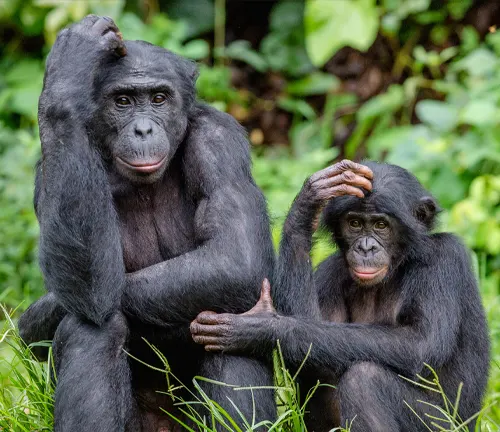
In the dense forests of Central Africa, a remarkable species of great ape thrives, known as the bonobo (Pan paniscus). These close relatives of chimpanzees share 98.7% of their DNA with humans, making them one of our closest living relatives. However, bonobos possess unique characteristics and behaviors that distinguish them from other primates. In this article, we will explore the captivating world of bonobos, from their social structure to their endangered status, shedding light on why they deserve our attention and protection.
Bonobo’s Natural Habitat
Bonobos are primarily found in the dense rainforests of the Democratic Republic of Congo in Central Africa. They inhabit a relatively small range compared to other great apes, making them vulnerable to habitat loss due to deforestation.
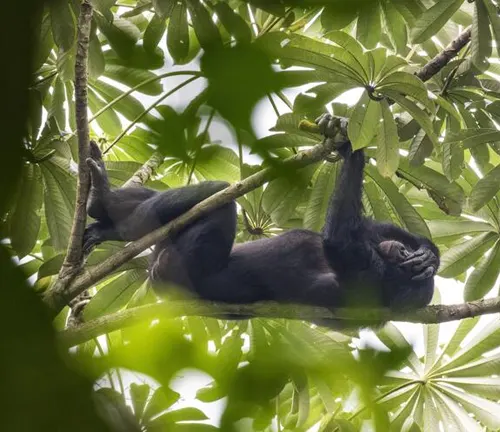

Physical Characteristics
These great apes have a slender build, long legs, and black or dark-brown hair. Bonobos are known for their expressive faces, with pink lips, small ears, and strikingly human-like eyes.
Social Structure and Behavior
Female Empowerment
Unlike most primates, bonobo societies are matriarchal. Females hold the central role in decision-making and social dynamics. This unique structure has earned them the nickname “hippie apes” due to their peaceful and cooperative nature.
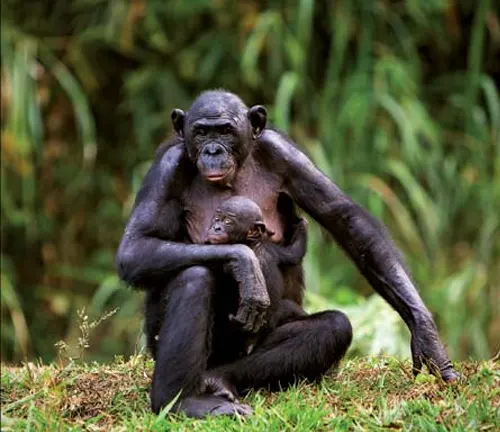

Peaceful Coexistence
Bonobos are famous for their non-aggressive behavior. They use sex as a means of resolving conflicts and forming bonds. This peaceful coexistence sets them apart from chimpanzees, who are often more aggressive.
Communication Among Bonobos
Vocalizations
Bonobos communicate through a variety of vocalizations, including hoots, screams, and cries, each carrying different meanings. They can also produce high-pitched peeps to show excitement or alertness.


Body Language
Gestures and body language are essential in bonobo communication. They use hugging, grooming, and even touching of hands and feet to convey emotions and build relationships.
Diet and Foraging Habits
Bonobos primarily consume a vegetarian diet, consisting of fruits, leaves, and stems. They are known for their dexterity in extracting food from hard-to-reach places, using sticks and other tools.
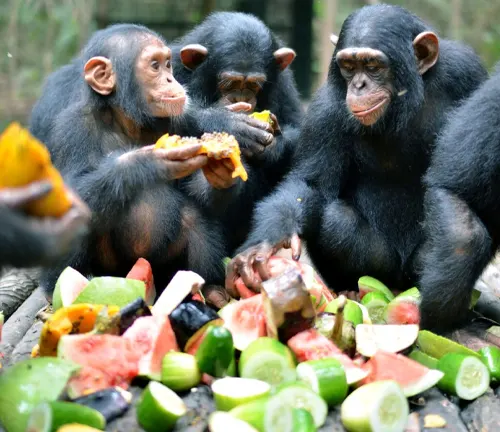
Reproduction and Family Life
Matriarchal Societies
As mentioned earlier, female bonobos play a significant role in their societies. They control access to resources and use their social connections to protect their offspring.
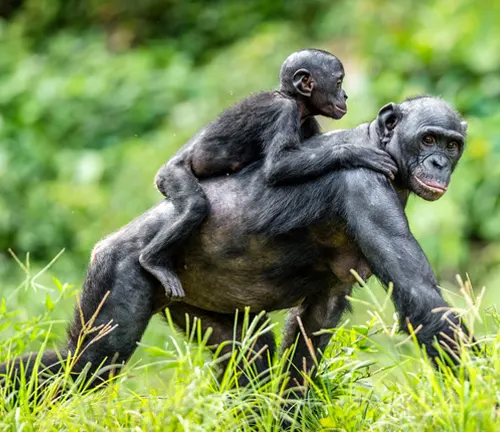
Child-Rearing
Bonobo mothers invest a considerable amount of time and effort in raising their young. Infants have a strong bond with their mothers and are nursed for an extended period.
Conservation Status
Bonobos are classified as endangered by the International Union for Conservation of Nature (IUCN). Their population has been steadily decreasing due to habitat destruction and hunting.
Threats to Bonobo Survival
The major threats to bonobos include habitat loss from logging and agriculture, as well as illegal hunting for bushmeat and the pet trade.
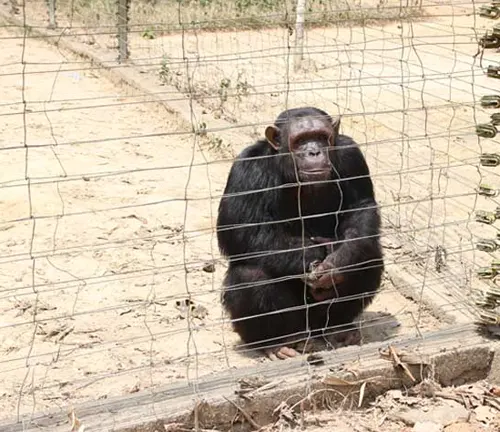
Conservation Efforts
Efforts are underway to protect bonobo populations and their habitats. Conservation organizations are working to establish protected areas and combat illegal wildlife trade.
The Role of Ecotourism
Sustainable ecotourism can provide economic incentives for local communities to protect bonobo habitats and promote conservation.
Frequently Asked Question (FAQs)
- What are bonobos, and where are they found?
Bonobos are great apes found in the dense rainforests of the Democratic Republic of Congo in Central Africa. - How do bonobos differ from chimpanzees?
Bonobos differ from chimpanzees in terms of behavior, social structure, and physical characteristics, with bonobos being more peaceful and matriarchal. - What is the size of the bonobo population in the wild?
The exact population of wild bonobos is difficult to estimate, but it is believed to be around 15,000 to 20,000 individuals. - What is the main threat to bonobo survival?
Habitat loss due to deforestation and hunting for bushmeat are the primary threats to bonobo survival. - Are bonobos endangered?
Yes, bonobos are classified as endangered by the International Union for Conservation of Nature (IUCN). - Do bonobos live in groups?
Yes, bonobos live in social groups called communities, typically consisting of 20 to 100 individuals. - What do bonobos eat in the wild?
Bonobos are primarily herbivorous and eat a diet of fruits, leaves, stems, and occasionally insects. - How do bonobos communicate with each other?
Bonobos communicate through vocalizations, body language, and gestures, using a wide range of sounds and behaviors to convey messages. - Do bonobos use tools?
Yes, bonobos are known for using tools, such as sticks and leaves, for various purposes, including extracting food and grooming. - Are bonobos more closely related to humans than chimpanzees?
Bonobos and chimpanzees are equally closely related to humans, sharing approximately 98.7% of their DNA with us. - What is the role of females in bonobo societies?
Females play a central role in bonobo societies, holding power and making decisions, which is unique among great apes. - How do bonobos resolve conflicts within their groups?
Bonobos often use sexual behavior as a means of conflict resolution, which contributes to their peaceful reputation. - Can I visit bonobo habitats for research or tourism?
Access to bonobo habitats is limited, and researchers and tourists must follow strict guidelines to protect these endangered animals. - What is the lifespan of a bonobo in the wild and in captivity?
In the wild, bonobos typically live to be around 40-50 years old, while in captivity, they can live longer, sometimes reaching their 60s. - What conservation organizations are working to protect bonobos?
Several organizations, such as the Bonobo Conservation Initiative and World Wildlife Fund, are actively involved in bonobo conservation efforts.




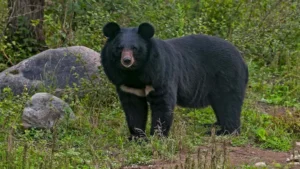





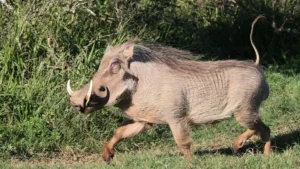
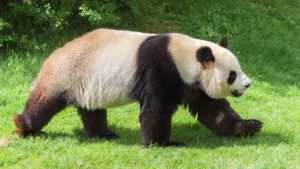

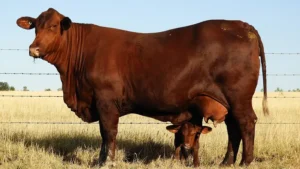
Leave your comment